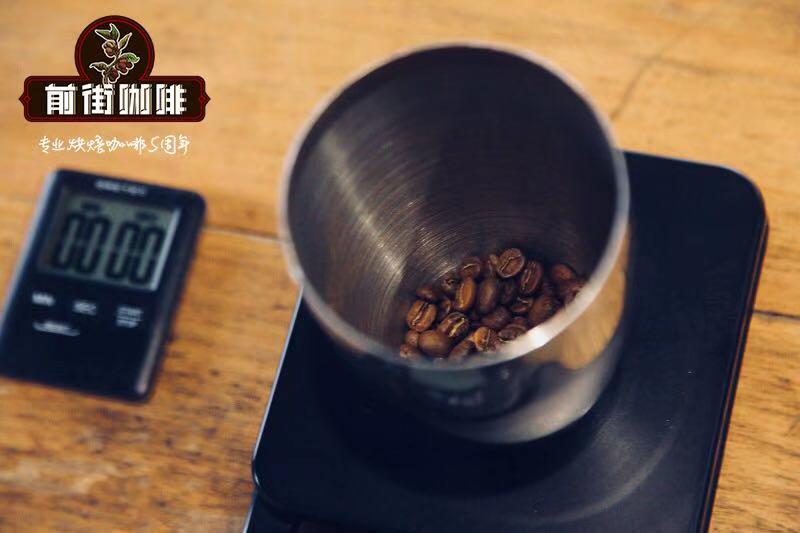What kind of Coffee does Elida Manor in Panama grow? introduction to Manor Lelida in Panama

Professional coffee knowledge exchange more coffee bean information please follow the coffee workshop (Wechat official account cafe_style)
Qianjie Coffee-introduction to Alida Coffee Manor in Panama
[name]: Alida Manor Sunshine (Elida Natural)
[producing area]: Pocket (Boquete)
[manor]: Alida Manor (Elida)
[variety]: Catuai 85%, Typica & Bourbon 15%, Geisha (small amount)
[treatment]: Natural
[altitude]: more than 1800 meters
[planting soil]: volcanic soil (Volcanic clay)
[flavor description]: tropical fruits, spices, nuts, milk chocolate
The history of the farm dates back to 1918. The farm was owned by the Lamastus family, and the name of the farm, Elida Alida, was the name of the then farmer, Mrs. Robert Louis Lamastus. Elida Manor is located in the Boquete producing area, the elevation of the manor is almost the highest in Panama, and nearly half of the area is in the National Conservation Park, is a rare ultra-high altitude manor in Central America! Elida Manor has a total area of 65 hectares, more than half of which are located within the Baru Volcano National Park, 30 hectares of the estate are planted with coffee trees, and the remaining 35 hectares are virgin forests. Coffee is grown from 1670 to 1850 meters above sea level, making it one of the two highest coffee farms in Panama (the other estate with these elevations should be Carmen in the Vulcan Valley).
The rugged mountain of Balu is a young volcano with an elevation of more than 3400 meters, which is an active volcano. Due to the great temperature difference in the morning and evening, the coffee in Alida Manor needs 5 years of care before it can be harvested for the first time. The waiting time for receipt is quite long (usually only 3 years for coffee in the producing area). Although the plant grows slowly, it is very helpful to the development of coffee flavor. After entering the harvest period, the ripening period of coffee is often more than a month due to the relationship of temperature. when irresistible factors such as hurricanes and heavy rains come on the eve of ripening, it is well known that it will cause heavy losses, but because the beans do not meet the harvest standards of the manor, under the insistence of quality, refuse to rush to harvest, resulting in a sharp decline in harvest! The risk is actually much greater than that of other low-altitude estates.
There are three main varieties planted in Elida Manor, namely, Catuai (Kaduai), Typica (Iron pickup) and Geisha (Rose Summer). The processing plant of the manor is halfway up the hillside. After the coffee is picked, it can be transported to the factory for processing as soon as possible to ensure that the quality of the coffee fruit is not affected. Of course, Elida's environment is also suitable for growing other high-quality temperate crops, especially tree tomatoes and some uncommon high-altitude fruits, which are interestingly often found in Elida coffee.
In addition to the unique ultra-high altitude and microclimate, Mr. Wilford, the owner of the manor, has also made considerable efforts in harvesting and processing. In order to meet the highest standard, the coffee at Elida Manor is only allowed to pick the most ripe coffee fruit (Ripe on Pinton) by hand with high maturity and natural high sugar content of pectin, which is also the basis for producing high-quality Elida flavor.
Mr. Wilford, the owner of the estate, in addition to the extremely strict treatment of coffee cultivation, the "purification" after the processing of raw beans is also more stringent than those in the same industry. Alida of Panama, for example, needs to go through more than 5 months of low-temperature Resting to remove green after raw beans are processed, so that the flavor of coffee can be more balanced and full development. (low-temperature Resting is a concept of raw bean purification that was vigorously promoted by coffee master George Howell in 2006. We found that raw beans in subtropical places need to be kept at low temperature, but different treatments and elevations will change the time of low-temperature Resting. For Alida, Panama, 5 months of low-temperature Resting is the best.)
END
Important Notice :
前街咖啡 FrontStreet Coffee has moved to new addredd:
FrontStreet Coffee Address: 315,Donghua East Road,GuangZhou
Tel:020 38364473
- Prev

Characteristics of coffee beans in Manor Alida in Panama introduction to Rose Summer of Manor Alida in Panama
Professional coffee knowledge exchange more coffee bean information please follow the coffee workshop (Wechat official account cafe_style) Qianjie Coffee-Elida Estate Manor Rose Summer introduction Ailida Manor (Elida Estate) in recent years the victorious army of B.O.P (Best of Panama), in 2018 also entered the B.O.P, and won a number of rankings, in 2017 won the B.O.P championship, a record difficult to surpass
- Next

The Historical Story of European Coffee the Historical background of European Coffee Coffee controversy in Europe
Professional coffee knowledge exchange more information about coffee beans Please follow the coffee workshop (Wechat official account cafe_style) Coffee came to Europe to the near East the European traveler brought back the story of an unusual black drink. By the 17th century, coffee spread to Europe and became popular throughout the continent. Some people reacted to the new drink with suspicion or fear, calling it Sasa.
Related
- Beginners will see the "Coffee pull flower" guide!
- What is the difference between ice blog purified milk and ordinary milk coffee?
- Why is the Philippines the largest producer of crops in Liberia?
- For coffee extraction, should the fine powder be retained?
- How does extracted espresso fill pressed powder? How much strength does it take to press the powder?
- How to make jasmine cold extract coffee? Is the jasmine + latte good?
- Will this little toy really make the coffee taste better? How does Lily Drip affect coffee extraction?
- Will the action of slapping the filter cup also affect coffee extraction?
- What's the difference between powder-to-water ratio and powder-to-liquid ratio?
- What is the Ethiopian local species? What does it have to do with Heirloom native species?

